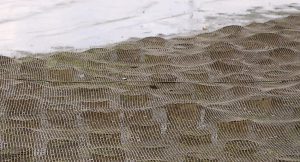
Washington Sea Grant researchers seek paths forward in local conflicts over geoduck farming
With a greater ecological understanding, Washington Sea Grant works to increase understanding of social perspectives of geoduck clam aquaculture.
Scroll down to view posts

With a greater ecological understanding, Washington Sea Grant works to increase understanding of social perspectives of geoduck clam aquaculture.
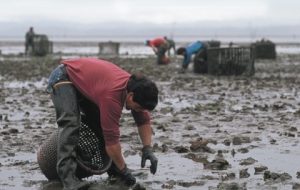
Washington Sea Grant assesses the economics, environmental effects and growth potential of clams and oysters in America’s foremost shellfish-growing state.
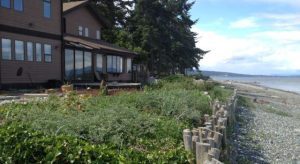
Washington Sea Grant and its partners LEED the way for waterfront dwellers trying to restore their shorelines.
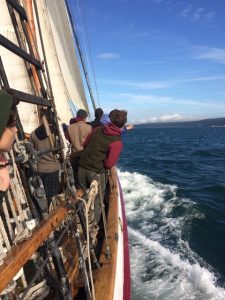
As a marine workforce crisis looms, Washington Sea Grant helps make Maritime Discovery Schools out of an entire school district.
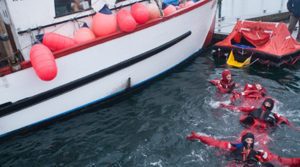
Commercial fishing is one of the nation’s most dangerous occupations, nowhere more so than on the West Coast.
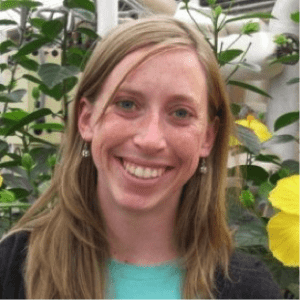
Washington Sea Grant student works with the Crab Team, a citizen science program dedicated to preemptively detecting invasive European green crab by monitoring pocket estuaries for signs of settlement.
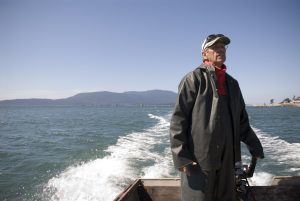
From cleaning and bleeding to direct marketing, casino contracts, and restaurant romance: Pete Granger and his Washington Sea Grant colleagues help Washington's tribes and other coastal communities resist an import invasion and take control of their fishing future.
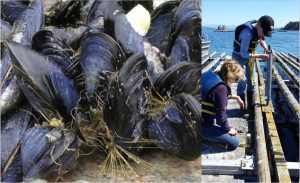
Mussels dominate rocky coastlines and support aquaculture worldwide. Now Washington Sea Grant-supported researchers at the University of Washington are investigating climate-related threats to the amazingly tough mussel threads that anchor them to wave-pounded rocks and docks.
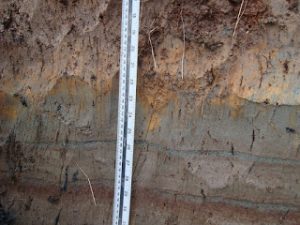
Washington Sea Grant’s hazard specialists expose the dangers on a coast where even the Coast Guard is vulnerable.
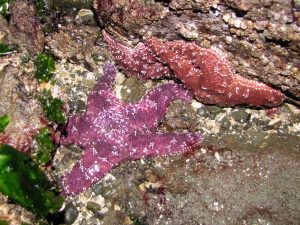
Washington Sea Grant funded scientists help track down a virus involved in what may be the largest marine wildlife epidemic ever seen. Meanwhile, Washington Sea Grant monitors see a surge of healthy young sea stars.
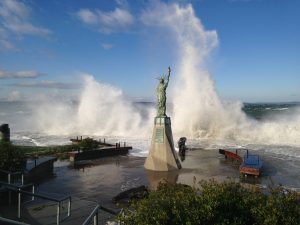
Vertical land movement, caused by sediment settling, groundwater extraction, and tectonic forces, can boost or reduce the local effects of global sea level rise. Conventional wisdom says that the offshore collision of two continental plates is pushing up Washington’s and Oregon’s coastlines. This assumption may make coastal communities complacent about climate change and sea level rise. Using tidal-gauge and GPS readings, Washington Sea Grant’s Ian Miller and colleagues have found that vertical land movement actually varies dramatically along Washington’s shores. While the Olympic Coast’s northwest corner is rising, the land is actually subsiding as little as 30 miles down the coast – and along densely populated Puget Sound. Communities need local data to prepare for rising seas.
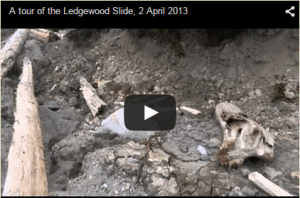
After the March 2014 Oso landslide, Washington Sea Grant communications staff volunteered at the site to provide communications support during disaster response. After the 2013 Whidbey Island landslide, a Washington Sea Grant-installed camera monitored continuing land movement.
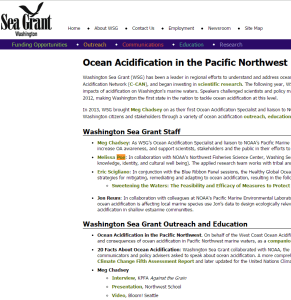
Washington Sea Grant is synthesizing information on the resilience and vulnerability of communities to coastal hazards such as ocean acidification and leading the design of a participatory, community-based rapid appraisal in several Washington and Oregon communities facing such hazards. This appraisal will assess culturally significant ecosystem variables, such as important food species and communities’ sense of place, and identify anticipated and cumulative threats posed to them.
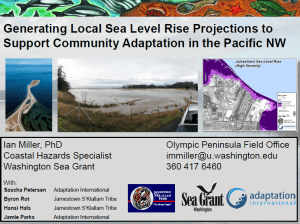
Washington Sea Grant is leading an effort to improve estimates of vertical land movement in Washington State, that will be used to improve sea level rise and coastal flooding assessments.
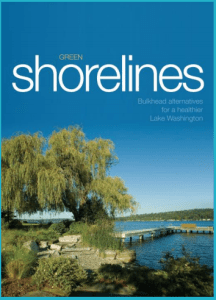
With funding from the EPA, Sea Grant partners with the City of Seattle among others to offer an incentive and certification credit system developed for single family homes. The goal of this voluntary program is to develop shoreline sustainably, using green vs. grey infrastructure whenever possible
Washington Sea Grant, in partnership with the Jamestown S’Klallam Tribe and the University of Washington Program on the Environment, is developing an outreach plan for a group of homes on the Strait of Juan de Fuca, Washington State, that have been identified as highly vulnerable to sea level rise and coastal flooding. The outreach plan will try to identify ways to work with homeowners to identify options that will both protect their infrastructure and investment, while avoiding hard armoring and shoreline engineering.
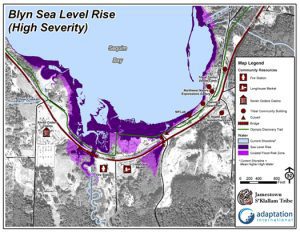
Washington Sea Grant partnered with the Jamestown S'Klallam Tribe and Adaptation International to develop a set of local sea level rise projections, and sea level scenario maps for the Jamestown S'Klallam community. The assessments are being used to identify priority adaptation actions, tribal areas or resources that are particularly vulnerable to sea level rise, and have also been integrated into community long-term planning. Additionally, Washington Sea Grant is partnering with North Olympic Peninsula Resource Conservation District and Adaptation International on a multi-sector climate change vulnerability assessment and adaptation plan, including sea level rise and coastal flooding projections for coastal communities in Clallam and Jefferson Counties.
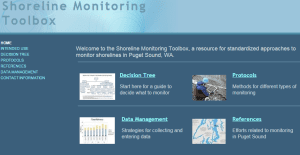
Washington Sea Grant, working with the Puget Sound Partnership and Puget Sound Ecosystem Monitoring Program Nearshore Work Group, has standardized approaches for monitoring and a “toolbox” of protocols and information. The toolbox emphasizes methods that are simple and affordable, and that can be used for monitoring restoration sites and evaluating status and trends.
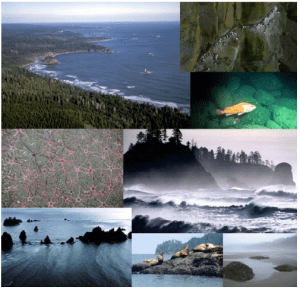
Washington Sea Grant led the development of the Olympic National Marine Sanctuary (OCNMS) Climate Change Assessment, which examined the vulnerability of sanctuary resources to climate change. The report, intended for OCNMS staff, the OCNMS advisory committee, and the Intergovernmental Policy Council, is being used as a springboard for climate change adaptation activities in the sanctuary, and adjacent (mostly tribal) communities.
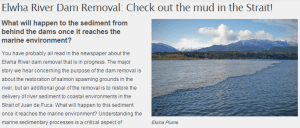
Dam removal on the Elwha delta has led to a massive flux of sediment to the coastal zone, leading to what is in effect the largest beach nourishment experiment ever in Washington State. Washington Sea Grant, in collaboration with the US Geological Survey, the Lower Elwha Klallam Tribe and others, is investigating the fate of that sediment and particularly how it acts to re-nourish eroding beaches. The results can be applied to problems associated with beach erosion due to climate change and sea level rise.

King Tides, or extreme high tides, offer the chance to view what the future might look like with higher sea levels. The King Tides Project directs citizens to capture images of King Tide events and upload them onto the website. The Washington King Tides project is part of an international collaboration.
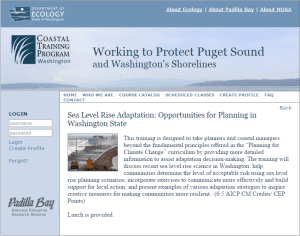
Washington Sea Grant, in collaboration with the Climate Impacts Group and the Department of Ecology offered a course through the Padilla Bay NERR’s Coastal Training Program on sea level rise adaptation. Building on the 2008 basic climate change course, this sea level rise course offered up to date scientific projections on sea level rise rates in the Padilla Bay NERR, in addition to methods to effectively communicate climate change, various planning opportunities in Washington, and examples of what others around the US have done. This course is the second in a series of climate adaptation courses.
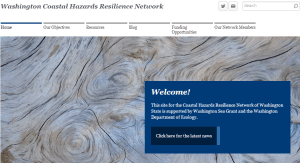
Washington Sea Grant, in collaboration with the Department of Ecology and with funding from NOAA, has developed a Coastal Hazards Resilience Network. The primary function of the network is to increase coordination and collaboration among state, federal and academic experts responsible for managing coastal hazards along the Washington Coast. The network is then applied at the local level to increase the resilience and capacity of local communities to plan for a respond to natural hazard events.
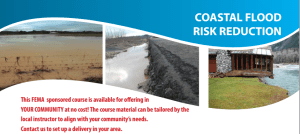
Washington Sea Grant staff members are certified to teach the FEMA-certified Coastal Flood Risk Reduction Course. This performance level course is designed to provide an introduction to flood-risk reduction opportunities within coastal communities.
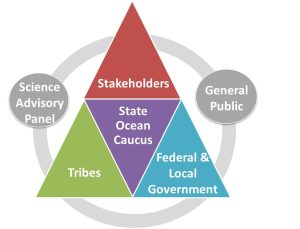
As a member of the State Ocean Caucus, Washington Sea Grant is a member of the State planning team charged by the State legislature to develop a marine spatial plan off Washington’s outer coast. The plan will provide better baseline information, ecosystem indicators, analyses to support coastal management decision-making, recommendations for siting new uses, implementation framework across agencies and sectors, integration of other existing policies and management and an adaptive management strategy. Washington Sea Grant plays a central role in this process by leading outreach, coordinating scientific review of data and projects, developing indicators of human well-being and economic health of the coast.
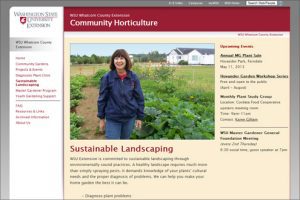
Classes, workshops, tours, displays, and web materials are provided to educate community members about practices they can employ on residential properties to reduce storm water impacts to receiving waters. The practices and information provided incorporate climate change adaptation benefits.
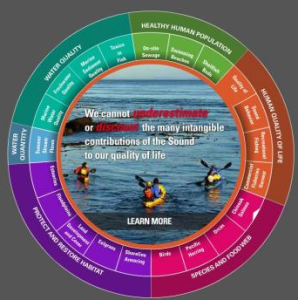
This report is a regional social science collaboration highlighting the gaps in knowledge related to people and marine environments. Robust social science is a fundamental aspect of ecosystem-based management; and moreover, provides necessary information for understanding resilience and vulnerability to human populations.
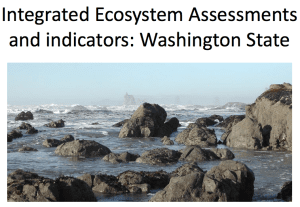
The emerging human wellbeing model is a comprehensive look at the material, relational, and subjective ways that the socioeconomic wellbeing of individuals and communities is tied to marine and coastal resources. The model provides a process for selecting indicators to measure human wellbeing.
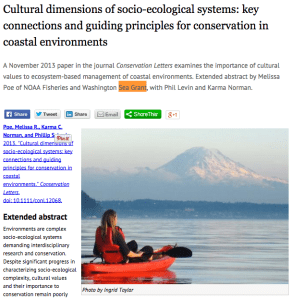
The cultural dimensions of coastal ecosystems framework and guidelines for best practices is a conceptual tool to guide scientists, managers and community practitioners in their efforts to: (1) identify potential cultural impacts in impacted areas; (2) select and develop methods for working with communities to characterize their cultural impacts. Cultural aspects are often ambiguous and moreover absent from vulnerability and resilience assessments and this guidelines offers clear and specific identification of cultural aspects that have been or could be impacted in events.
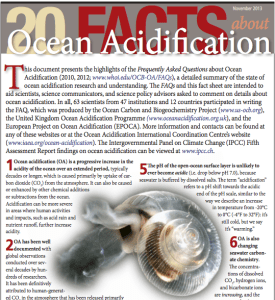
Washington Sea Grant, in partnership with state, federal (NOAA) and international scientists and communication experts have released two ocean acidification fact sheets as aids for scientists, science communicators and science policy advisors asked to comment on acidification: “20 Facts About Ocean Acidification” (Nov 2013. revised Feb 2014) and “Ocean Acidification in the Pacific Northwest” (May 2014). They have also been instrumental in the development of NOAA's Sharing Ocean Acidification Resources for Communicators and Educators (SOARCE) webinar series (8 presentations in 2014).
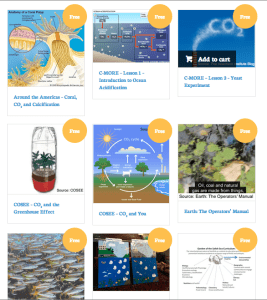
Washington Sea Grant, in partnership with the Suquamish Tribe, and with assistance from teachers, and state and academic education specialists, is developing a curated online collection of Ocean Acidification curricula, teaching tools, and informational resources for high school, middle school and elementary classrooms. The online collection, which will launched in Oct 2014, can be searched using a variety of filters, such as grade band, subject, type of material (i.e. lab activity, presentation, reading and analysis, etc.), and length of activity. This effort supports coastal resilience by building ocean acidification literacy.
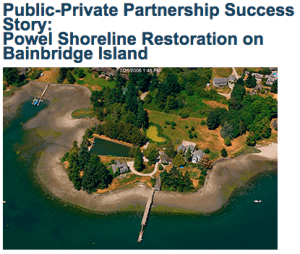
In Puget Sound, shoreline armoring is being removed or is being replaced with what are thought to be less disruptive alternatives. Restoring physical and biological connections in the nearshore where structures are not at risk is expected to improve habitat conditions and reduce long-term costs for homeowners. By establishing volunteer monitoring of these sites, Washington Sea Grant has helped create a baseline for erosion and vegetation that can be used to inform other projects and shoreline management decisions in the near-term and provide a long-term reference as climate change and sea level rise influence conditions in the nearshore.
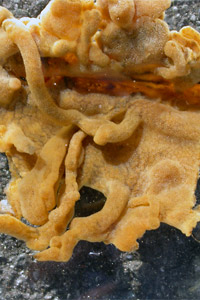
Preventing the introduction and spread of aquatic invasive species is the only way to eliminate associated ecological and economic damages. Where prevention measures fail, early detection of a newly established population offers the best hope of effectively reducing impacts. By working formal and informal education settings to encourage prevention measures and by establishing a network to monitor marine waters for key species of concern, Washington Sea Grant aims to prevent and reduce economic and ecological harm for coastal communities.

These workshops are designed to bring confidence to homeowners and businesses so that they can properly manage their on-site sewage systems. The workshops focus on the monitoring and maintenance of septic systems during all conditions and highlight special monitoring after an earthquake, during flooding events and power outages.
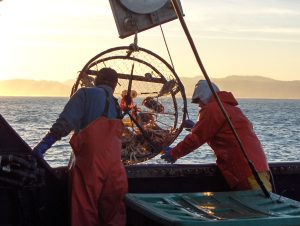
It might seem incongruous to talk of traffic disputes and costly collisions in an area as vast as the waters off the Pacific coast. But that’s the situation that afflicted the coast’s tribal and commercial crab fishers and its tug-and-barge and shipping operators for decades as they shared the same sealanes.
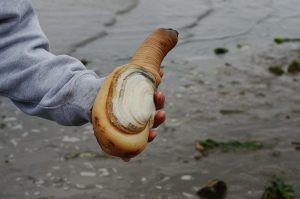
New peer-reviewed research on geoduck aquaculture increases understanding of how industry operations might affect Puget Sound and Strait of Juan de Fuca environments. Those key findings are included in a report released today by Washington Sea Grant.